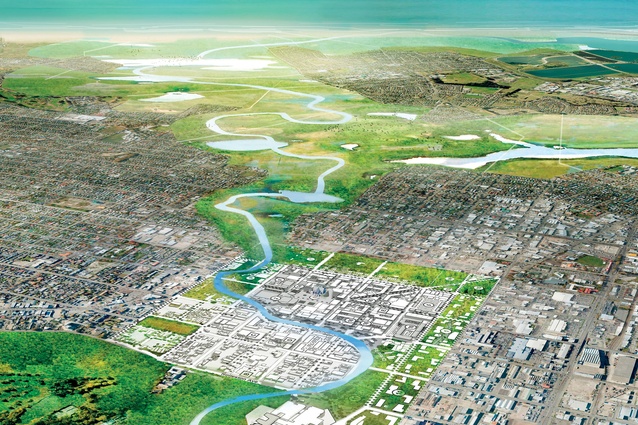Sustainable architecture
Bernd Gundermann recently won the 2014 Global Award for Sustainable Architecture for his ground-breaking work on a soft, ecosystem-based approach to increase urban resilience to the effects of climate change. Here he explains how this applies to interiors…
It has everything to do with interiors! As interior designers, we are aware of how tired, uninspiring offices lead to inner withdrawal and disengagement of staff. Ultimately, this translates into poor economic performance. And our beautiful land? In Yale University’s recently published index, which measures the performance of a state’s environmental policies, New Zealand slipped down from rank 1 to rank 16 in only eight years, which means that, despite ‘Green Star’ initiatives or ‘Environmental Choice’, something is going terribly wrong and we need to forge new ways to save nature and ourselves in the face of climate change.
The work for which I was awarded is recognised as a leap forward to overcoming the narrow pathways to which modern societies have subscribed. Instead of driving further separation between natural sciences and humanities, and between people and environments, I’m leading the way to integration.
Kaitiakitanga is the Māori concept that encompasses the intergenerational responsibility for the environment, which includes the spiritual responsibility. Indigenous belief retains the unity of material and metaphysical realms; people understand themselves as an intrinsically interconnected part of nature. Western thought abandoned this interdependence 400 years ago when René Descartes claimed that we humans were “the masters and posessors of nature”.
Designers’ briefs for interiors, buildings or urban precincts are usually limited to functionality and efficiency. These elements, however, represent only a small part of the entire spectrum that design should address. Interior design typically ends with suspended ceilings and refuses to challenge air conditioning as default best practice’ for commercial buildings. But a room where you can’t open a window has placed a solid boundary between occupants and the world outside. Vast office floor plates with windows in the far distance disconnect people from natural light. Most commercial buildings are mere submarines, workable only with ‘life support’ machinery of fluorescent light and breezeless air. This strong degree of separation from nature is causing both people and environments to suffer. However economically justified, that is the reality.
The same applies to cities, which are assemblies of functional buildings trenched by roads, cut off from the coasts by traffic infrastructure. Life in our urbanised society is widely separate from nature, outdoors as well as indoors. Our buildings represent our commitment to this single paradigm of the route to economic success, and the deterioration of nature is simply collateral damage.
But what happens when climates, sea levels and weather patterns start to change? All these trends are worsening rapidly and are catching us flat-footed. My approach posits a method that overcomes the limitations of any one discipline by creating a fluid network of scientists, designers, engineers, economists, philosophers, stakeholders and spiritual leaders who come together to develop soft, ecosystem-based strategies to mitigate the effects of climate change on urban shores. It wants to learn from nature, emulate nature and include metaphysics. Our quest to meet the challenge of climate change forces us to employ everything that mankind has thought and made over many millennia.
Together with previous laureates, among them Wang Shu, Studio Mumbai, Junya Ishigami, Snøhetta and Teddy Cruz, I will formulate a manifesto – Re-enchant the world: Architecture and the City Facing Society’s Transitions.
As we experience change on a planetary scale and realise that none of our usual remedies are taking hold, we need to think outside the square – something that should resonate with the
kiwi mindset.










